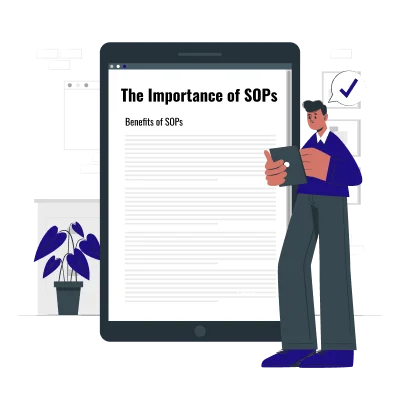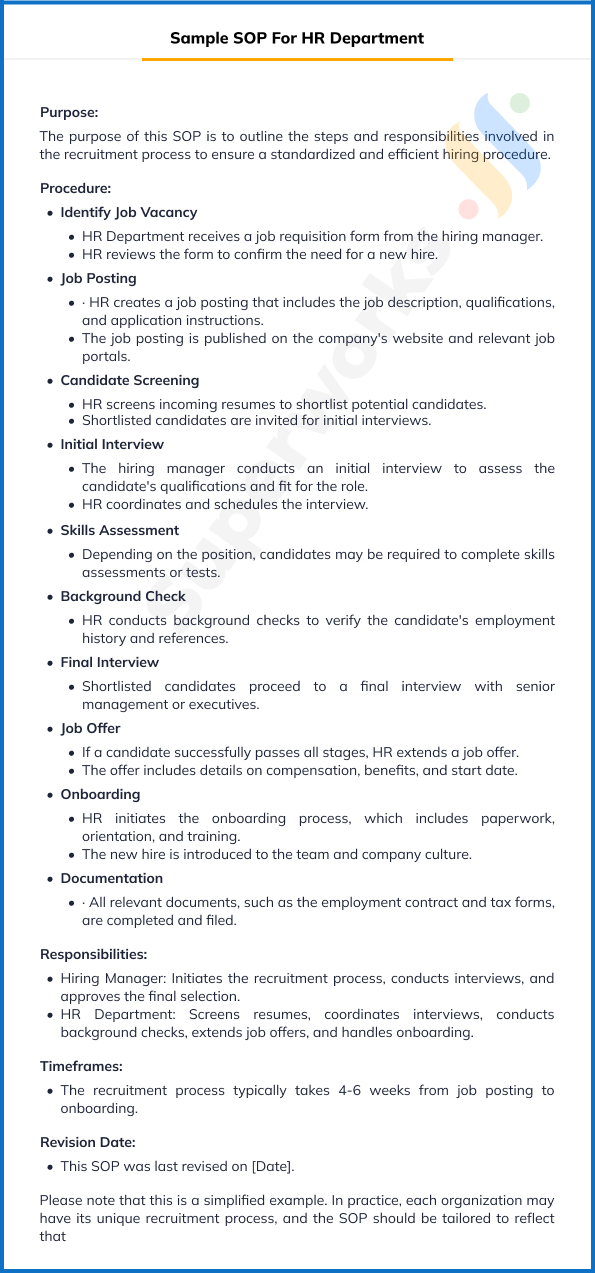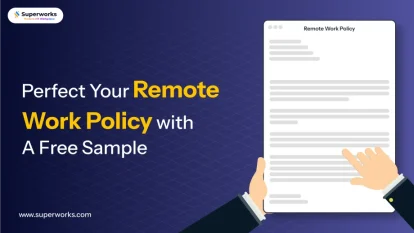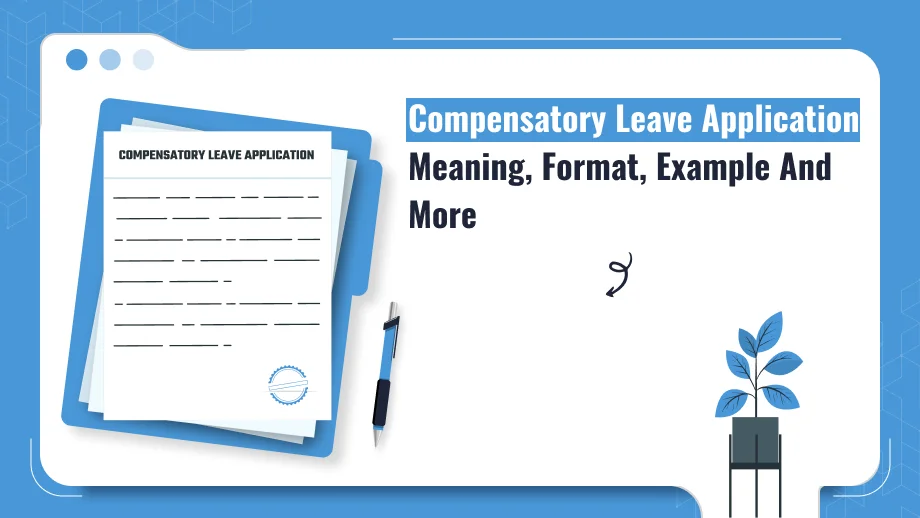Grab a chance to avail 6 Months of Performance Module for FREE
Book a free demo session & learn more about it!
-
Will customized solution for your needs
-
Empowering users with user-friendly features
-
Driving success across diverse industries, everywhere.
Grab a chance to avail 6 Months of Performance Module for FREE
Book a free demo session & learn more about it!
Superworks
Modern HR Workplace
Your Partner in the entire Employee Life Cycle
From recruitment to retirement manage every stage of employee lifecycle with ease.


Seamless onboarding & offboarding
Automated compliance & payroll
Track performance & engagement
The Ultimate Guide to Standard Operating Procedures- SOPs for HR Department
- SOPs For HR Department
- 10 min read
- November 9, 2023

In today’s dynamic and ever-evolving business landscape, the Human Resources (HR) department plays a pivotal role in managing an organization’s most valuable asset – its people.
To ensure efficiency, consistency, and compliance in HR operations, it’s crucial to establish clear guidelines and procedures. This is where Standard Operating Procedures (SOPs) come into play.
This comprehensive HRMS software guide will walk you through the world of HR SOPs, explaining their importance, and how to create effective ones, and even provide a sample SOP for HR department PDF. Whether you’re a seasoned HR professional or just starting in the field, this guide will help you streamline your HR processes.
Note: You can download directly from here and edit as per your need.
- Why SOPs are Crucial for HR?
- What is The Importance of SOPs for HR Department?
- Creating an Effective SOP for HR Department
- Sample of SOP for HR Department
- To give you a better understanding, here’s a simplified sample SOP for the recruitment process:
- Implementing and Training on SOPs For HR Department
- Continuous Improvement of HR SOPs
- Role of SOPs in Training and Development:
- Expense Management and Payroll Processes:
- Benefits of Implementing HR SOPs:
- Overcoming Challenges with SOPs:
- Conclusion
Why SOPs are Crucial for HR?
SOPs serve as a blueprint for HR teams, providing a structured approach to various tasks. They ensure consistency in processes, compliance with policies and procedures, and efficient execution of HR functions. Having SOPs in place is particularly vital for the HR department, as it deals with sensitive areas such as employee relations, training and development, and payroll processes.
What is The Importance of SOPs for HR Department?
SOPs are the backbone of any well-organized HR department. They offer a multitude of benefits, including
1. Consistency
SOPs provide a standardized approach to HR processes. This ensures that every employee is treated equitably, which is essential in areas such as recruitment, onboarding, and performance management.
2. Compliance
In the world of HR, regulations and laws are ever-changing. SOPs help your department stay in compliance with labor laws, data protection regulations, and industry standards.
3. Efficiency
Having documented procedures in place streamlines HR tasks, making them more efficient. This leads to time and cost savings, enabling HR professionals to focus on strategic initiatives.
4. Training and Onboarding
SOPs are invaluable when it comes to training new HR employees. They provide a structured resource that facilitates quicker onboarding and minimizes errors.
5. Performance Evaluation
With SOPs, HR can easily track and measure the performance of various HR functions, identifying areas for improvement and optimization.
Also, See: 10 Common Problems Of HR Onboarding Can Be Solved By HRMS Software

Ready to Transform HR with SOPs For HR Department? – Try Us
Learn the secrets to success with our comprehensive guide. Ready to dive in! Find out how in Ultimate Guide. Download it today!
Get the Ultimate Guide and start your journey to HR excellence today!
Creating an Effective SOP for HR Department
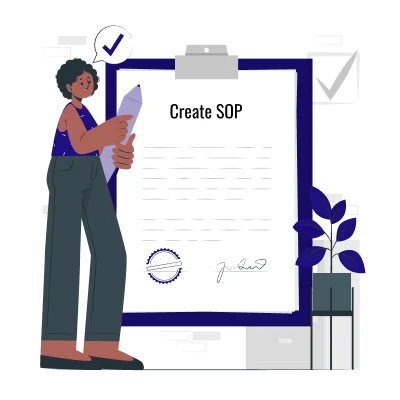
Now that we understand the importance of SOPs for HR Department, let’s delve into the process of creating them effectively.
a. Understanding HR Processes
Before you can document your HR procedures, you need to have a deep understanding of your department’s processes. This involves mapping out every HR function, from recruitment and onboarding to employee relations and exit interviews.
b. Identifying Key HR Responsibilities
Once you’ve outlined your processes, identify the key responsibilities within each one. For instance, in the recruitment process, you might have responsibilities such as sourcing candidates, conducting interviews, and making job offers.
c. Documenting HR Procedures
Now comes the crucial step of documenting your HR procedures. Here are some guidelines to follow:
Clear Language: Use plain and simple language that everyone in your organization can understand. Avoid jargon or complex terminology.
Step-by-Step Instructions: Break down each procedure into easy-to-follow steps. Use bullet points or numbered lists to make it visually appealing.
Visual Aids: Incorporate flowcharts, diagrams, or screenshots where applicable. Visual aids can help employees grasp the process more quickly.
Responsibilities: Clearly define who is responsible for each step of the procedure. This ensures accountability.
Timeframes: Specify the expected timeframes for each task or step. This helps in setting realistic expectations.
Checklists: Consider using checklists for tasks that involve multiple sub-steps. Checklists make it easier to ensure nothing is overlooked.
Revision Dates: The SOP template for hr department should not be static documents. Include revision dates to indicate when a procedure was last updated.
d. Incorporating HRMS Software
In the modern era of HR management, HRMS (Human Resource Management System) software has become indispensable. It automates various HR tasks and streamlines processes. When creating SOPs for HR, it’s essential to incorporate HRMS software into your procedures. This ensures that your SOPs are aligned with your digital HR infrastructure.
For example, if your organization uses Superworks, a popular HRMS software in India, your SOPs should include specific instructions on how to utilize its features for HR tasks such as leave management, payroll processing, and employee data management.
When developing SOPs for the HR department, it is essential to identify the key processes that need documentation. These may include onboarding procedures, training and development processes, employee performance evaluations, and exit processes. Each SOP should be clear, concise, and easy to follow.
Sample of SOP for HR Department
To give you a better understanding, here’s a simplified sample SOP for the recruitment process:
Standard Operating Procedure: Recruitment Process
Purpose:
The purpose of this SOP is to outline the steps and responsibilities involved in the recruitment process to ensure a standardized and efficient hiring procedure.
Procedure:
Identify Job Vacancy
-
HR Department receives a job requisition form from the hiring manager.
-
HR reviews the form to confirm the need for a new hire.
Job Posting
-
HR creates a job posting that includes the job description, qualifications, and application instructions.
-
The job posting is published on the company’s website and relevant job portal.
Candidate Screening
-
HR screens incoming resumes to shortlist potential candidates.
-
Shortlisted candidates are invited for initial interviews.
Initial Interview
-
The hiring manager conducts an initial interview to assess the candidate’s qualifications and fit for the role.
-
HR coordinates and schedules the interview.
Skills Assessment
-
Depending on the position, candidates may be required to complete skills assessments or tests.
Background Check
-
HR conducts background checks to verify the candidate’s employment history and references.
Final Interview
-
Shortlisted candidates proceed to a final interview with senior management or executives.
Job Offer
-
If a candidate successfully passes all stages, HR extends a job offer.
-
The offer includes details on compensation, benefits, and start date.
Onboarding
-
HR initiates the onboarding process, which includes paperwork, orientation, and training.
-
The new hire is introduced to the team and company culture.
Documentation
-
All relevant documents, such as the employment contract and tax forms, are completed and filed.
Responsibilities:
-
Hiring Manager: Initiates the recruitment process, conducts interviews, and approves the final selection.
-
HR Department: Screens resumes, coordinates interviews, conducts background checks, extends job offers, and handles onboarding.
Timeframes:
-
The recruitment process typically takes 4-6 weeks from job posting to onboarding.
Revision Date:
-
This SOP was last revised on [Date].
-
Please note that this is a simplified example. In practice, each organization may have its unique recruitment process, and the SOP should be tailored to reflect that.
Implementing and Training on SOPs For HR Department
- Once you’ve created your HR SOPs, the next step is implementation and training. Here are some tips to ensure a smooth transition:
-
Communication: Inform all relevant employees about the new SOPs. Hold training sessions or workshops to explain the procedures in detail.
-
Accessibility: Make sure SOPs are easily accessible to all HR staff. Consider using a centralized document management system or a dedicated HR portal.
-
Feedback Loop: Encourage feedback from employees who use the SOPs. This can help identify any areas that need clarification or improvement.
-
Regular Updates: SOPs should evolve with your organization. Regularly review and update them to reflect changes in HR processes or regulations.
Continuous Improvement of HR SOPs
The HR landscape is constantly evolving, and your SOPs should evolve with it. Here are some strategies for continuous improvement:
-
Regular Audits: Conduct regular audits of your HR processes to identify bottlenecks or areas for improvement.
-
Feedback from Users: Solicit feedback from HR staff who use the SOPs regularly. They can provide valuable insights into areas that need adjustment.
-
Stay Informed: Stay up-to-date with changes in HR laws and regulations. Update your SOPs to ensure compliance.
-
Benchmarking: Compare your HR processes with industry best practices and benchmark against competitors to identify areas for improvement.
-
Automation: Leverage HRMS software like Superworks to automate repetitive tasks and streamline processes further.
SOPs for HR are systematic documents that outline the standard processes and procedures to be followed within the HR department. These guidelines cover a wide range of activities, from recruitment and onboarding to employee performance management and exit processes.
Role of SOPs in Training and Development:
SOPs play a pivotal role in training and development by providing a structured framework for employee onboarding and ongoing training programs. They ensure that new employees are introduced to the company’s culture, policies, and procedures in a systematic manner, contributing to a seamless integration into the organization.
SOPs act as a safeguard for HR teams, ensuring that all activities align with the organization’s policies and procedures. This is crucial for maintaining legal compliance and mitigating risks associated with HR processes.
An SOP for the exit process is equally important. It outlines the steps to be followed when an employee leaves the organization, covering aspects such as clearance procedures, return of company assets, and conducting exit interviews. This ensures a smooth transition and minimizes disruptions.
Expense Management and Payroll Processes:
SOPs for expense management and payroll processes are indispensable for the HR department. They provide guidelines on how to handle reimbursement claims, track expenses, and execute accurate payroll processing. This not only enhances efficiency but also reduces the likelihood of errors.
Benefits of Implementing HR SOPs:
Implementing SOPs in the HR department offers numerous benefits. It ensures uniformity in operations, enhances employee experience, facilitates compliance with regulations, and contributes to the achievement of organizational goals. Moreover, SOPs provide a reference point for HR teams, helping them navigate through complex processes.
SOPs can be adapted for diverse HR functions, including recruitment, employee performance management, and in-house training. Regardless of the specific area, having well-documented SOPs ensures that processes are consistently followed, promoting efficiency and effectiveness. Integrating expense management software into these SOPs can further streamline financial processes, ensuring accurate tracking and reporting of expenses.
Overcoming Challenges with SOPs:
While SOPs are crucial, it is important to acknowledge potential challenges. Resistance to change, ensuring that SOPs are up-to-date, and overcoming the perception of SOPs as rigid constraints are some common challenges. However, a proactive approach to communication and training can help mitigate these issues.
Conclusion
Standard Operating Procedures (SOPs) are the cornerstone of an efficient and effective HR department. They provide consistency, compliance, and efficiency in HR processes. By understanding your HR processes, documenting procedures, and incorporating HRMS software like Superworks, you can create SOPs that elevate your HR department’s performance.
Remember that SOPs are not static documents. They should be continuously reviewed and improved to adapt to the changing HR landscape. With well-crafted SOPs in place, your HR department can excel in managing your organization’s most valuable asset – its people.
Also See: HR operations roles and responsibilities
